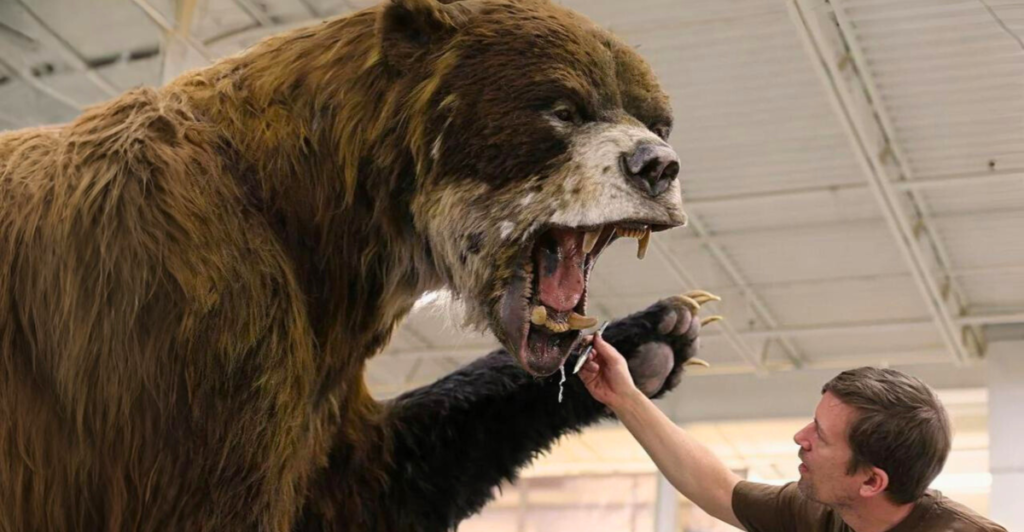
Towering over other predators, North America’s biggest bear is a true giant of the wild. With unmatched strength, surprising speed, and a few unexpected quirks, this massive creature commands both awe and respect. Whether you’re a wildlife enthusiast or just love a good animal fact, these nine jaw-dropping truths will give you a whole new appreciation for this powerful beast.
The Kodiak Bear: North America’s Gentle Giant
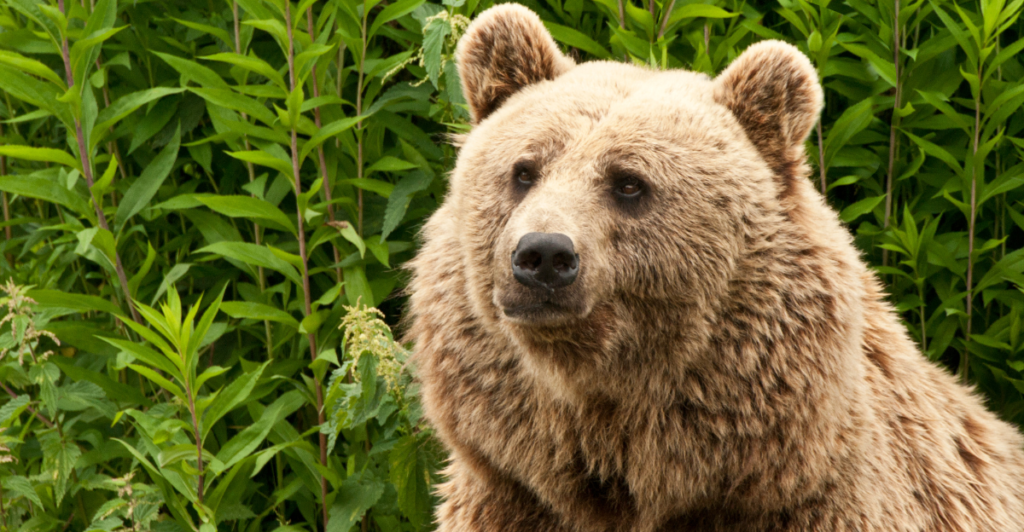
The Kodiak bear (Ursus arctos middendorffi) isn’t just North America’s largest bear—it’s among the heaviest land carnivores alive. Exclusively found on Alaska’s Kodiak Archipelago, these bears can weigh over 680 kilograms (1,500 pounds) and stand up to 3 meters (10 feet) tall.
Yet despite their intimidating appearance, Kodiak bears are generally non-aggressive toward humans unless provoked. Their isolated environment, abundant food, and lack of natural predators have led to a surprisingly mellow temperament. Unlike their mainland grizzly relatives, they’ve developed a unique ability to coexist relatively peacefully with local communities.
Centuries of human-bear interaction, particularly with the Alutiiq people, have further influenced their behavior. This harmonious balance between size and serenity makes the Kodiak bear not just a biological marvel, but a testament to how even the most powerful predators can evolve gentler tendencies in the right environment.
Kodiak Bears Show Remarkable Adaptability to Climate Change
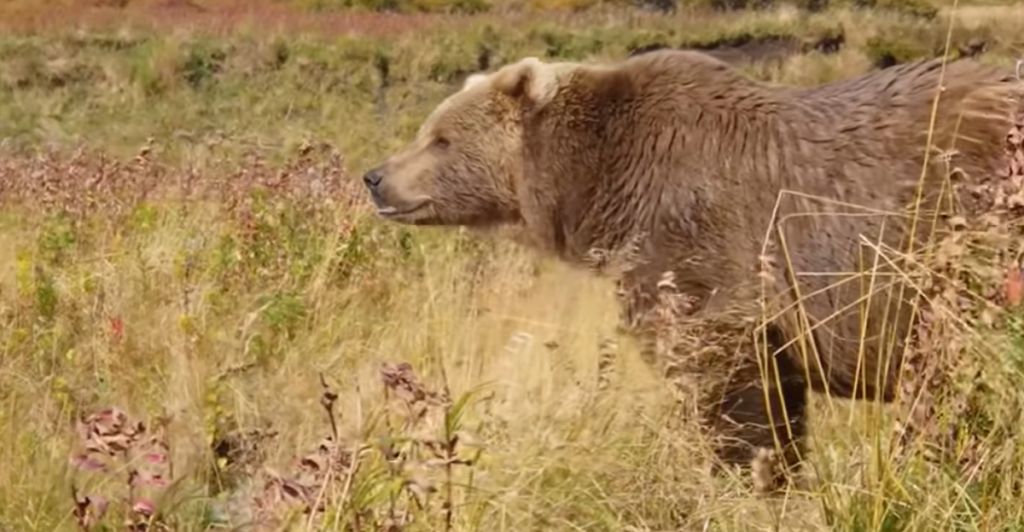
Despite their isolated habitat and relatively small population, Kodiak bears are showing signs of unexpected genetic resilience in the face of climate change. Recent genomic studies have uncovered significant diversity in their DNA—especially in genes related to metabolism, reproduction, and thermal regulation.
These traits allow them to adapt more flexibly to shifting food sources and warming temperatures. Some bears have even altered their hibernation cycles and expanded their foraging behaviors, indicating a real-time evolutionary response to environmental stressors.
This discovery challenges assumptions that island species, due to their limited gene pools, are more vulnerable to climate threats. Instead, Kodiak bears stand out as a rare example of how certain large mammals might weather—and even adapt to—global change.
A Bear Twice the Size of Its Mainland Cousins
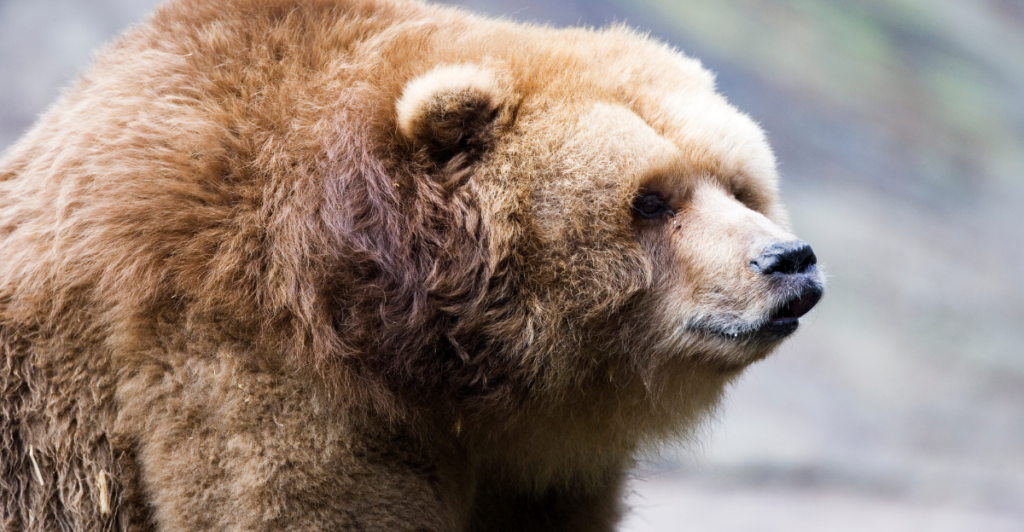
The massive size of Kodiak bears is not merely a fluke of nature—it’s a textbook case of island gigantism, a rare evolutionary process where island-dwelling species become far larger than their mainland relatives. Isolated from predators and in competition only with their own kind, Kodiak bears have evolved in just 12,000 years to become up to twice the size of inland grizzlies.
Some adult males weigh over 680 kilograms (1,500 pounds), dwarfing typical grizzlies, which usually top out at around 360 kilograms (800 pounds). With limited natural threats and a rich diet of fish, berries, and plants, the conditions of the Kodiak Archipelago created a perfect evolutionary recipe for gigantism.
Their sheer bulk not only gives them dominance in their ecosystem but also insulation against cold and the ability to store vast fat reserves, making them uniquely suited for life in Alaska’s rugged coastal terrain.
Kodiak Bears Are Primarily Vegetarians

Popular imagination paints Kodiak bears as relentless carnivores, but science tells a different story: up to 95% of their diet consists of plant material. These enormous predators gorge on sedges, roots, berries, and other vegetation for most of the year.
Fish—especially salmon—play a key role seasonally, but meat is not their staple. The idea that such a colossal animal thrives on a mostly vegetarian diet flips conventional assumptions about what it takes to fuel massive muscle and bulk. Thanks to the nutrient-rich flora of the Kodiak Archipelago and an efficient digestive system, these bears can gain the fat reserves needed for winter largely through grazing.
This dietary habit not only enables them to share space peacefully with other meat-eating animals, but it also reduces conflict with humans, since agricultural crops aren’t as tempting compared to wild vegetation.
Marine Mammals: Kodiak Bears Are Excellent Swimmers

Though most imagine bears lumbering through forests, Kodiak bears are surprisingly adept in the water. These titanic creatures can swim long distances—sometimes crossing channels up to 16 kilometers (10 miles) wide between the islands of the archipelago.
Their aquatic skill allows them to access food across a wide area, even reaching salmon-rich streams or stranded whale carcasses. Remarkably, some have been seen diving underwater to catch fish, holding their breath for up to 30 seconds.
This ability to navigate both land and sea sets Kodiak bears apart from many terrestrial predators. In an ecosystem where food availability shifts with seasons and tides, their aquatic mobility ensures survival. It also offers scientists insight into how large mammals can adapt and thrive in diverse, fragmented environments—a crucial trait as habitats shift due to climate change.
Hibernation Anomaly: Some Kodiak Bears Skip Winter Sleep

While hibernation is a hallmark of bear behavior, not all Kodiak bears follow the script. In the relatively temperate climate of the Kodiak Archipelago, some male bears remain active year-round. Instead of retreating into dens from November to April, these outliers continue to forage and sometimes even mate during the winter.
The phenomenon challenges the long-standing assumption that hibernation is a biological necessity for survival in cold climates. Milder winters, coupled with food availability—like late salmon runs or washed-up marine life—make staying awake a viable survival strategy.
This behavioral flexibility also suggests that hibernation may be more environmentally influenced than strictly hardwired. As scientists study how global warming affects seasonal behavior in wildlife, the Kodiak bear’s varied winter habits offer a compelling case of adaptability in action, potentially reshaping how we understand mammalian hibernation overall.
Kodiak Bears Can Lift 0.97 Times Their Body Weight
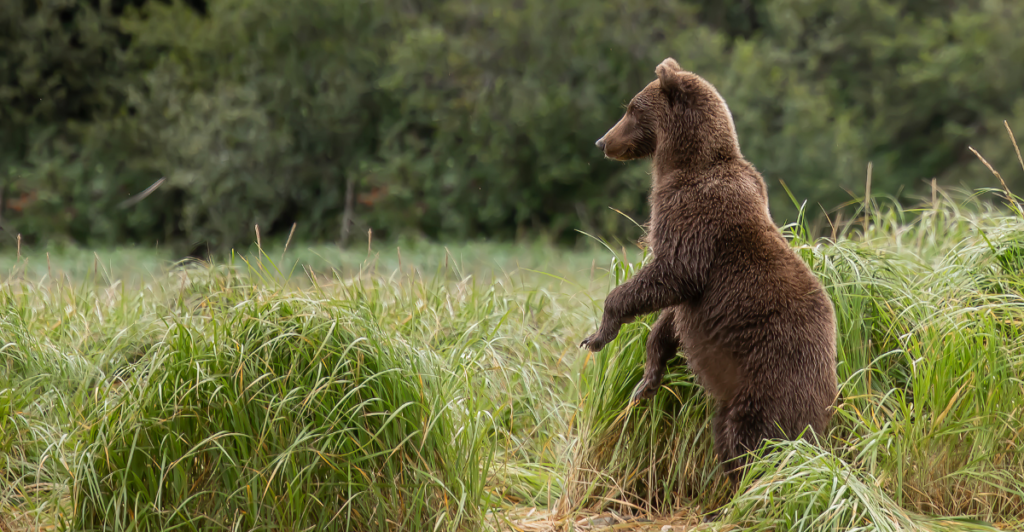
Kodiak bears are more than just massive—they’re staggeringly strong. A mature male can lift nearly its entire body weight, which can be upwards of 680 kilograms (1,500 pounds). In contrast, the average human strongman might lift around half his body weight overhead.
This strength allows bears to flip 225-kilogram (500-pound) boulders searching for food or drag prey heavier than themselves. Their shoulder and forelimb muscles are uniquely adapted for digging, lifting, and wrestling, reflecting their evolutionary role as apex foragers.
Even their bite force is immense, capable of cracking bone with ease. But their strength isn’t just physical—it’s also a survival tool. Whether digging dens into hillsides or defending territory, their brute power ensures dominance in one of the world’s most competitive ecosystems.
Kodiak Bears Have a Sense of Smell 100 Times Stronger Than Humans
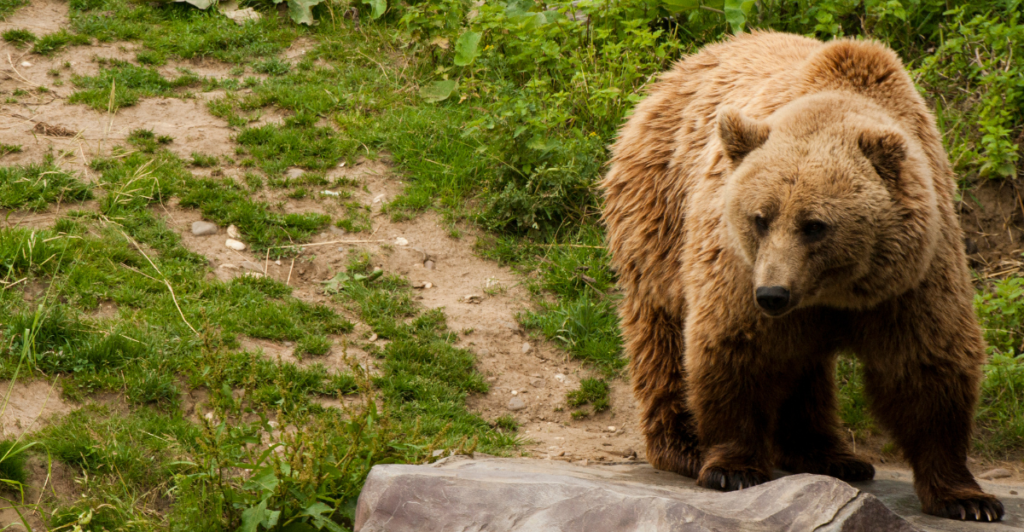
If bears had a superpower, it would be their nose—and Kodiak bears are no exception. Their sense of smell is estimated to be 100 times more acute than that of humans, allowing them to detect food sources, mates, or danger from up to 32 kilometers (20 miles) away.
Anatomically, they boast one of the largest olfactory bulbs relative to brain size in the animal kingdom. They can even sniff out a dead seal buried under meters of snow or soil. This sensory prowess gives them a massive advantage in the wild, especially on remote islands where food is dispersed and competition is high.
For scientists, understanding this ability opens doors into animal navigation, scent tracking, and the neurological connections between smell and memory.
Kodiak Bears Can Live Up to 40 Years in the Wild

Kodiak bears aren’t just big—they’re built to last. While most wild bears average a lifespan of 20–25 years, Kodiak bears can live up to 40 years in the wild under the right conditions. This remarkable longevity can be attributed to their protected habitat, lack of natural predators, and a diet that supports sustained health.
Older bears tend to be more experienced, avoiding human interactions and efficiently sourcing food. Over time, these long-lived individuals contribute cultural knowledge to their populations, such as learned fishing techniques or den sites. Their extended lifespans also allow researchers to track long-term behavioral and ecological trends, making them key indicators of environmental health.
In a world where many large species face declining lifespans due to habitat stress, the Kodiak bear’s decades-long survival offers a hopeful model of resilience when ecosystems are well-managed and protected.
Kodiak Bears Have Shaped Human Society on the Islands
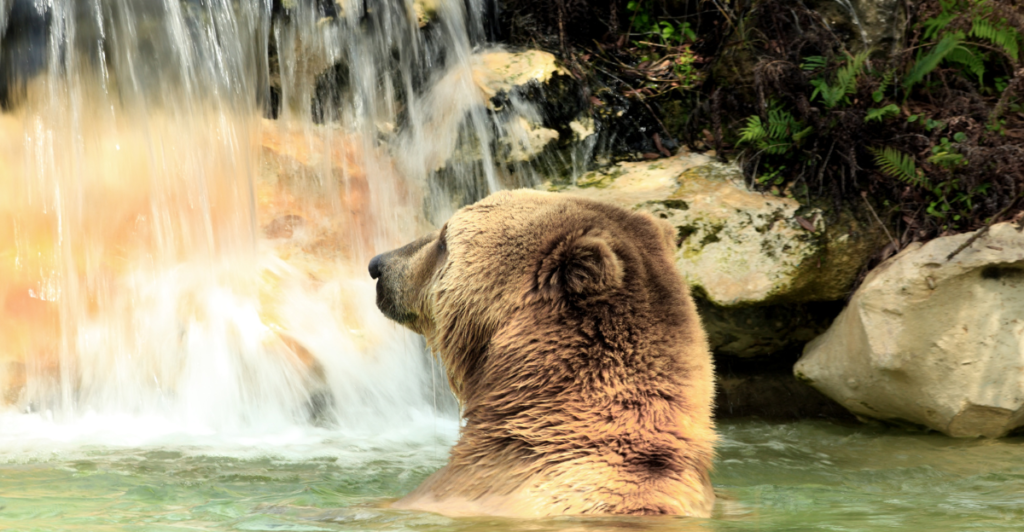
For the Alutiiq people of the Kodiak Archipelago, the bear is more than wildlife—it’s a cultural cornerstone. Revered for centuries, Kodiak bears appear in legends, masks, and ceremonies as symbols of power, balance, and spiritual connection.
Traditional hunting practices emphasized respect and sustainability, ensuring that bear populations remained robust. Today, this reverence continues in modern wildlife management and eco-tourism, where the bear symbolizes both heritage and economic opportunity. The presence of the Kodiak bear influences local infrastructure, zoning laws, and education, shaping daily life in ways few wild animals do.
This deep-rooted human-animal relationship stands in contrast to typical wildlife conflicts elsewhere. It exemplifies how mutual respect, tradition, and modern science can coexist, resulting in a model for harmonious human-wildlife interaction that’s rare in our increasingly urbanized and disconnected world.
Explore more of our trending stories and hit Follow to keep them coming to your feed!

Don’t miss out on more stories like this! Hit the Follow button at the top of this article to stay updated with the latest news. Share your thoughts in the comments—we’d love to hear from you!







